
First and Only Weekly Online Fanzine Devoted to the Life & Works of Edgar Rice Burroughs
Since 1996 ~ Over 15,000 Web Pages in Archive
presents
Volume 3356
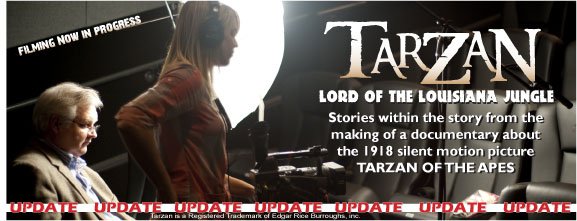



The View From Above
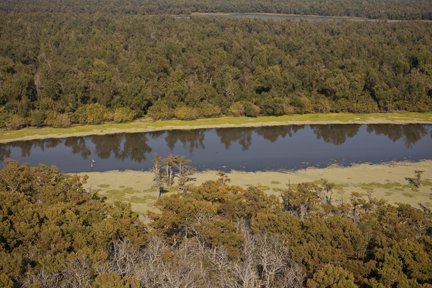
Here is a shot of the Bayou Teche snaking it way to the river.The Bayou Teche appears to slither like a snake down the landscape heading for the Atchafalaya River basin. Therefore, the name of the bayou is Teche or "snake." Another interesting thing is that Morgan City, Louisiana is an island with a river, bayous and lakes all around it. The only way to truly show these points of interest is by capturing aerial footage.
As we shot footage around the area, I wanted to give context to the landscape. The African Americans who made up the 800 extras lived on Avoca Island and worked on the sugar cane plantations. There was no bridge so the people were brought over to the main island of Morgan City by ferry. Then, they were all driven in trucks to the northeast corner of the city known as Lake End. In this area, the production team built the African village and filmed many jungle scenes. Elmo Lincoln who is credited for playing the Tarzan character had said that he liked the area because due to hurricanes, many of the giant trees were bent over. Instead of climbing, he could run up the slanted trunks. There have been about 40 hurricanes since 1918 in that area so the Lake End Park of the early 20th century is drastically different from today. From the air, this is all easier to see.
Most of the arboreal scenes were shot early in the film when Stellan Windrow was still playing the adult Tarzan. He was either drafted or enlisted in the navy and left the film after about four weeks to fight in World War 1. Each morning, about 25 people from National Pictures rode a steam boat up Bayou Teche to an area up the Atchafalaya River to shoot the tree scenes with Stellan as the ape man and the acrobats and gymnasts in ape costumes. My research has shown that it is very difficult to determine when the Berwick lock was built but the crew may have gone through the Lock to get to the main river channel.
From these details, it is easy to see that aerial footage is needed for orientation. I never like to have an audience wondering where they are in the universe. I want them thinking about story. So, from the start of this project I knew we needed images from the air. All along I have made inquires about air support but as we got nearer the end of photography, my search began in earnest. I called all kinds of helicopter companies in the area. Actually, there are quite a few due to the need to fly oil field crews out to the drilling platforms all the time. Because that is how they make their money, none were really interested in working with me. The cheapest price was about $4,000 PER HOUR! Airplane pilots cost less but were still pricey. I checked with stock footage vendors on-line to no avail. I contacted the state film office and was sent a DVD of very nice footage. However, the company who owned the video was in Germany and they wanted $3,500 with a one minute purchase guarantee. This might not sound like a lot of money and I suppose it is fair but I don't have that kind of money to tie up in one area.
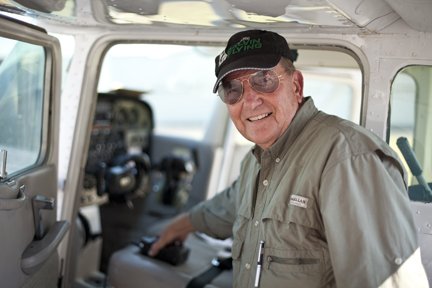
Emmett Carson is a super guy and a first rate pilot and
aerial photographer from Lafayette, LA.I have always been the kind who doesnít mind asking around. I don't want something for nothing but I do feel that information is power. I just ask around and one person led to another who led to another and before I knew it I was in contact with Emmett Carson. He is an aerial photographer from the Lafayette, LA area. His price was fair and his attitude was great also. I knew we would get along when I first talked to him on the phone. I told him about this project and the first thing he asked was if I was talking about the film where they released the monkeys.
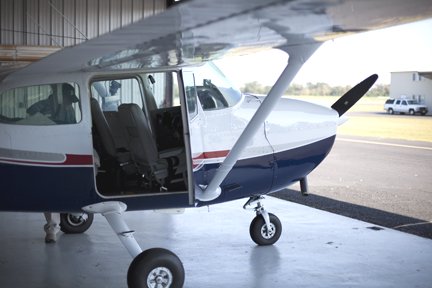
This is the plane that Allison and Emmett shot the aerial footage you will enjoy in our film. |
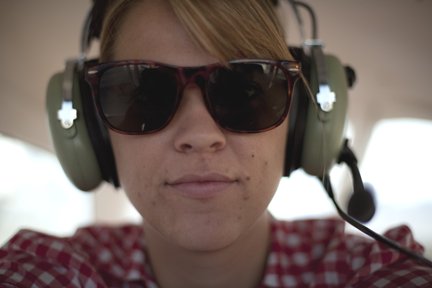
Allison was ready for her close up. . |
I marked up a map using my Adobe Illustrator program so they would know exactly what I wanted to be shot. Emmett and Allison got together and picked the perfect day. They shot the Teche all the way down to Morgan City and everything else needed. Allison downloaded the transferred footage onto my Mac and I have already cut it up. It is exactly what I hoped for. I am so indebted to Allison for all she has done. I realized last night that she has never questioned what I have asked her to shoot. Also, I donít tell her how to shoot it. I trust her eye. Every day I do something to push the boulder up the hill and count it all joy. I know you are sick of hearing me say it or write it, but this is going to be a very special film and book.
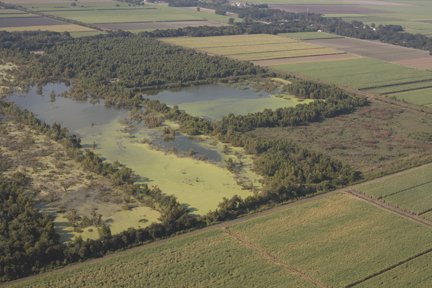
Sugar Cane is king in south Louisiana. It was from these plantationsthat the 800 African Americans extras were gathered for the Tarzan film. |
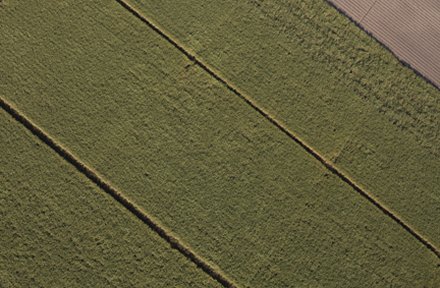
Another shot of the cane fields. As a child when we would be traveling, we would stop and cut us a cane to chew on the trip north. |
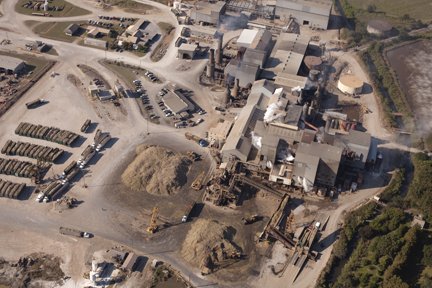
![]()

![]()
BILL
HILLMAN
Visit
our thousands of other sites at:
BILL
and SUE-ON HILLMAN ECLECTIC STUDIO
ERB
Text, ERB Images and Tarzan® are ©Edgar Rice Burroughs, Inc.-
All Rights Reserved.
All
Original Work ©1996-2010/2018 by Bill Hillman and/or Contributing
Authors/Owners
No
part of this web site may be reproduced without permission from the respective
owners.